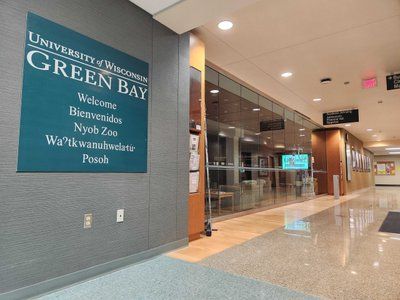By Tom Still
MADISON – If Wisconsin is the pioneer of stem cell science, why hasn’t the research blazed a path to more companies focused on commercializing stem cell discoveries?
That question arose during a recent presentation by UW-Madison Professor Gabriela Cezar on the state of stem cell science in the United States and around the world. The answers say something about Wisconsin’s ability to transfer technology to the marketplace – and the chilling effects of political uncertainty.
Cezar, who earned her Ph.D at UW-Madison before working in major pharmaceutical and biotech labs, recently returned to the university’s Department of Animal Sciences. She’s part of an interdisciplinary team of scientists at UW-Madison that is building on the work of Dr. James Thomson, who was first in world to keep human embryonic stem cells in an unchanging state.
Stem cells are the body’s building blocks. They grow into organs, tissue and bone, and they appear to hold some of nature’s secrets about how the body heals itself and even regenerates.
Cezar returned to UW-Madison because she believes the combination of talent and resources, including the planned Institute for Discovery and facilities such as the Waisman Center, are among the world’s best. But as she told crowd at Madison’s Wisconsin Innovation Network chapter, there is plenty of competition – especially on the commercial side of stem cell research.
Around the world, Cezar noted, there are about 70 companies doing significant stem-cell research in an effort to move discoveries to market. Those companies are engaged in drug discovery, in examining specific therapies, and in basic research about how cells work. A number of clinical studies or beginning or soon will begin, she said, in areas ranging from spinal cord injuries to chronic diseases.
In Wisconsin, however, there is only one company engaged in stem cell research – and it’s brand new. Thomson and his colleagues announced earlier this year they have formed Cellular Dynamics International to study the toxicity of drugs, particularly those that may be used to treat cardiovascular disease. That company received a combination of loans and grants from the state of Wisconsin, and well as other financing.
Why aren’t more stem cell companies taking root in Wisconsin? There may be several reasons:
Virtually all of the people involved in stem cell science in Wisconsin are proud “lab rats,” meaning they would prefer to remain on the research side and not engage in the uncertainties of the marketplace. They’re not business people and they’re smart enough to admit it. But their discoveries need to get into the hands of experienced business executives (now the case with Thomson’s CDI) so their discoveries can be pulled into the marketplace. Cezar is an exception to the Wisconsin rule; she’s as interested in market applications as she is in the core research.
Some states and nations have a more aggressive culture when it comes to commercializing science. Wisconsin is a leader in producing patents, but fairly mediocre when it comes to turning those inventions into companies, jobs and profits. California is an example of both: Voters there have authorized up to $3 billion over 10 years to invest in stem cell research and commercialization. While lawsuits have slowed California’s public investment, private investment there has been strong.
Wisconsin politicians have sent some discouraging signals. Legislative efforts to enact research controls that go beyond federal limits haven’t succeeded, but scientists and investors worry about what will happen if there’s a new governor in the Capitol’s East Wing. Gov. Jim Doyle has already vetoed one bill that threatened stem-cell research and vows to keep doing so. But he must stand for re-election in 2006. Cezar, for one, says she would leave Wisconsin if the Legislature enacted bans on stem-cell research.
Wisconsin is fortunate be where scientists began unlocking the secrets of human embryonic stem cells. The world is catching up, however, and is now running ahead when it comes to exploring commercial opportunities. Letting others beat us to the punch on stem cell commerce would be like giving away Stephen Babcock’s milk butterfat test in 1890 or failing to follow up on Harry Steenbock’s Vitamin D discoveries in the 1920s. Wisconsin capitalized on major academic breakthroughs in the past; it should do so again.





